前言
- 同步和异步通信的优缺点
- MQ简介
- RabbitMQ的五种消息模式及其Spring整合
MQ简介
同步通讯
微服务的Feign调用属于同步通讯。
优点:响应比较及时。
同步通讯存在一些问题:
- 耦合度高:每次新需求,都要修改原来的代码
- 性能下降:调用者需要等待服务提供者响应,如果调用链过长则响应时间等于每次调用的时间之和
- 资源浪费:调用链中每个服务在等待响应的过程中,不能释放请求占用的资源,高并发场景下会极度浪费系统资源
- 级联失败:如果服务提供者出现问题,所有的调用方都会跟着出问题
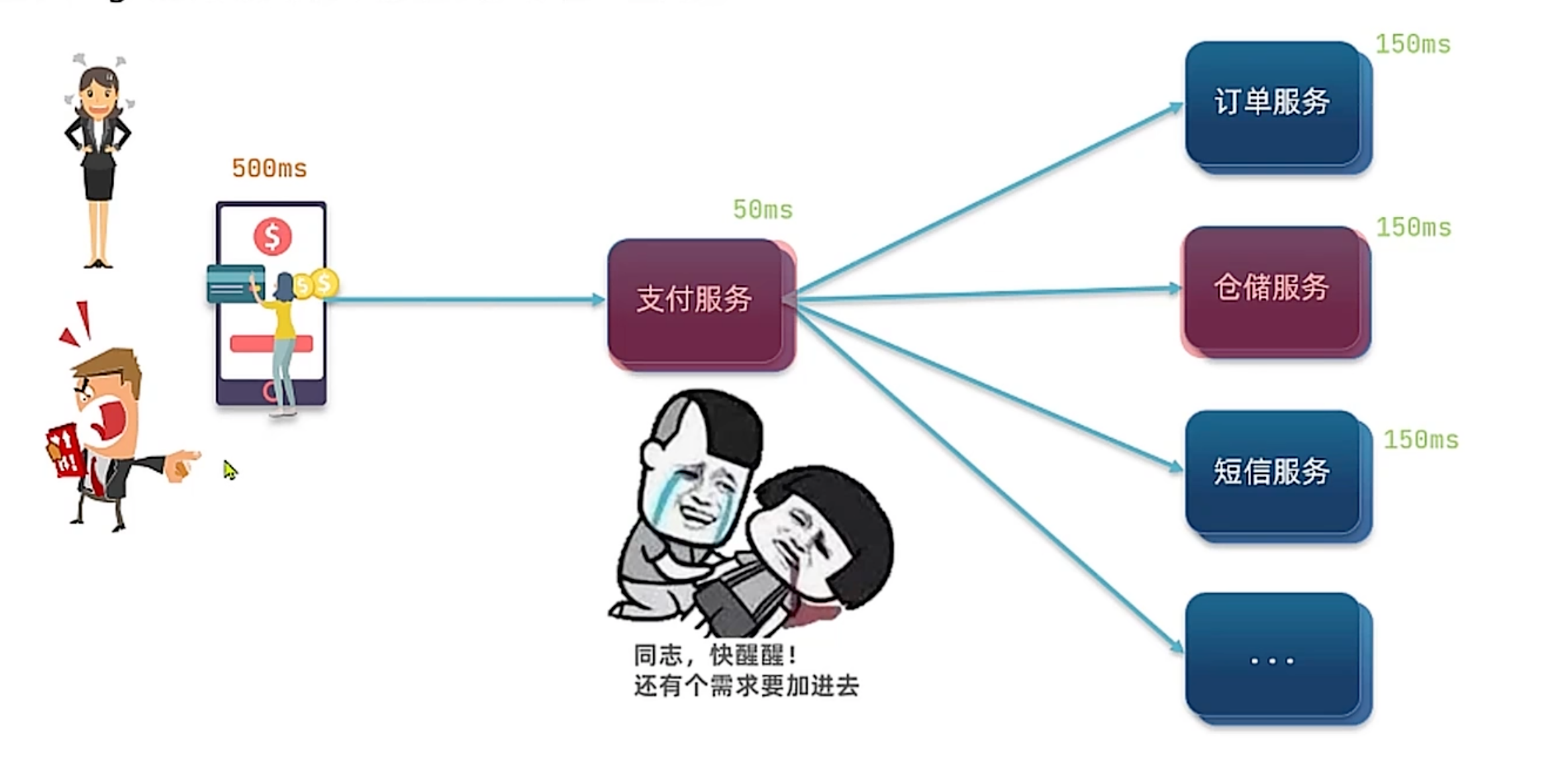
异步通讯
事件驱动,先有事件,再有执行。
异步通讯的优势:
- 服务解耦
- 性能提升,吞吐量提高
- 故障隔离
- 流量削峰:Broker中可以缓存相应的数据
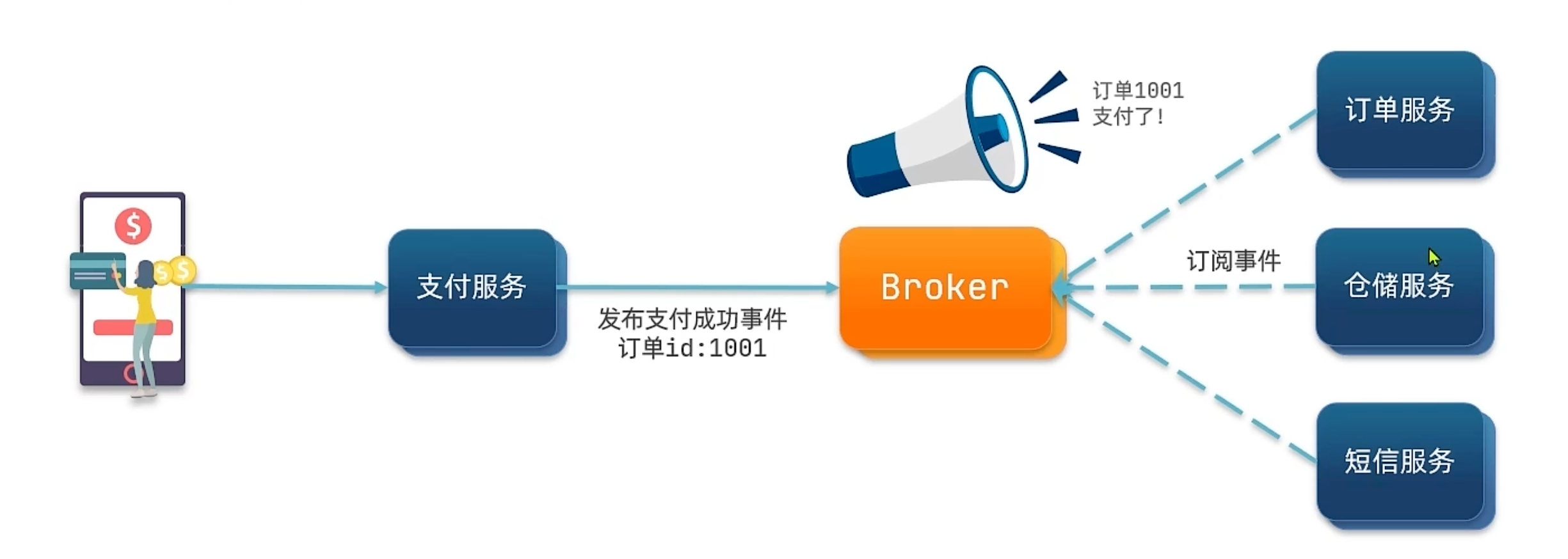
异步通信的缺点:
- 依赖于Broker的可靠性、安全性、吞吐能力
- 架构复杂了,业务没有明显的流程线,不好追踪管理
MQ对比
MessageQueue,消息队列,字面来看就是存放消息的队列。也就是事件驱动架构中的Broker。
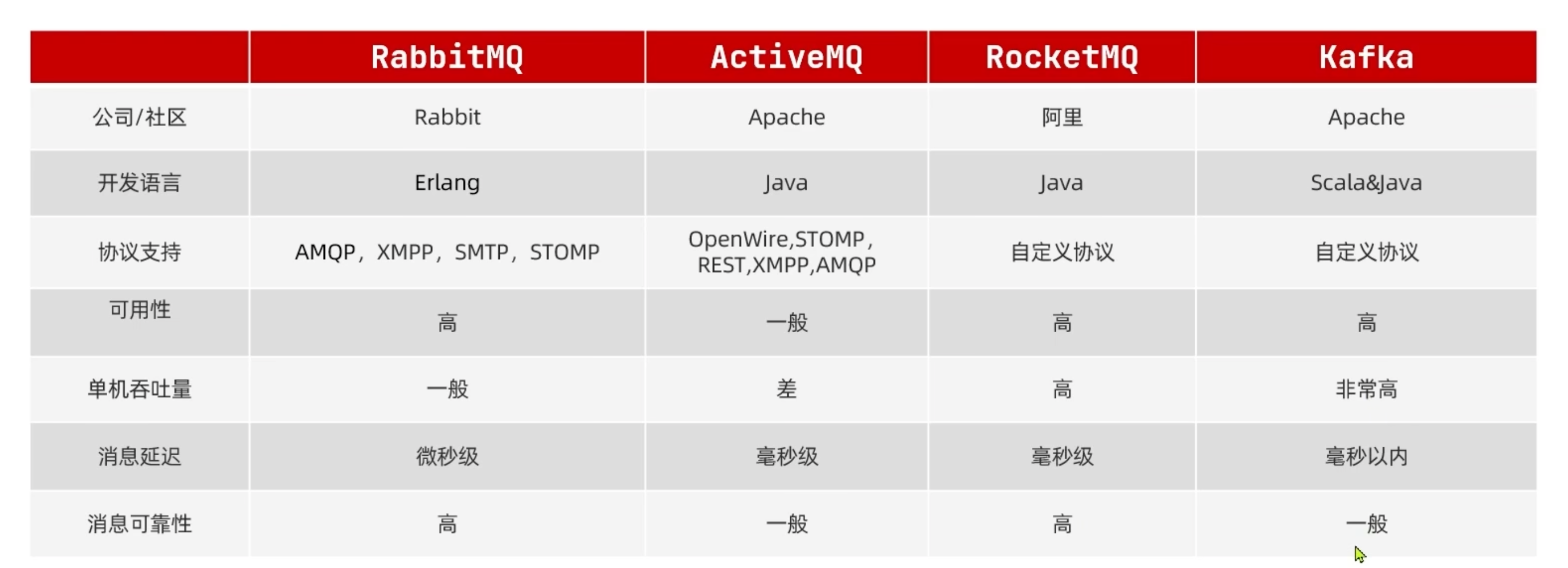
RabbitMQ入门
- 基于Erlang语言开发
- 开源: RabbitMQ官网
安装
1
2
3
4
5
6
7
8
9
10
11
12
|
docker pull rabbitmq:3-management
docker run \
-e RABBITMQ_DEFAULT_USER=admin \
-e RABBITMQ_DEFAULT_PASS=admin \
--name mq \
--hostname mq1 \
-p 15672:15672 \
-p 5672:5672 \
-d \
rabbitmq:3-management
|
RabbitMQ概念和结构
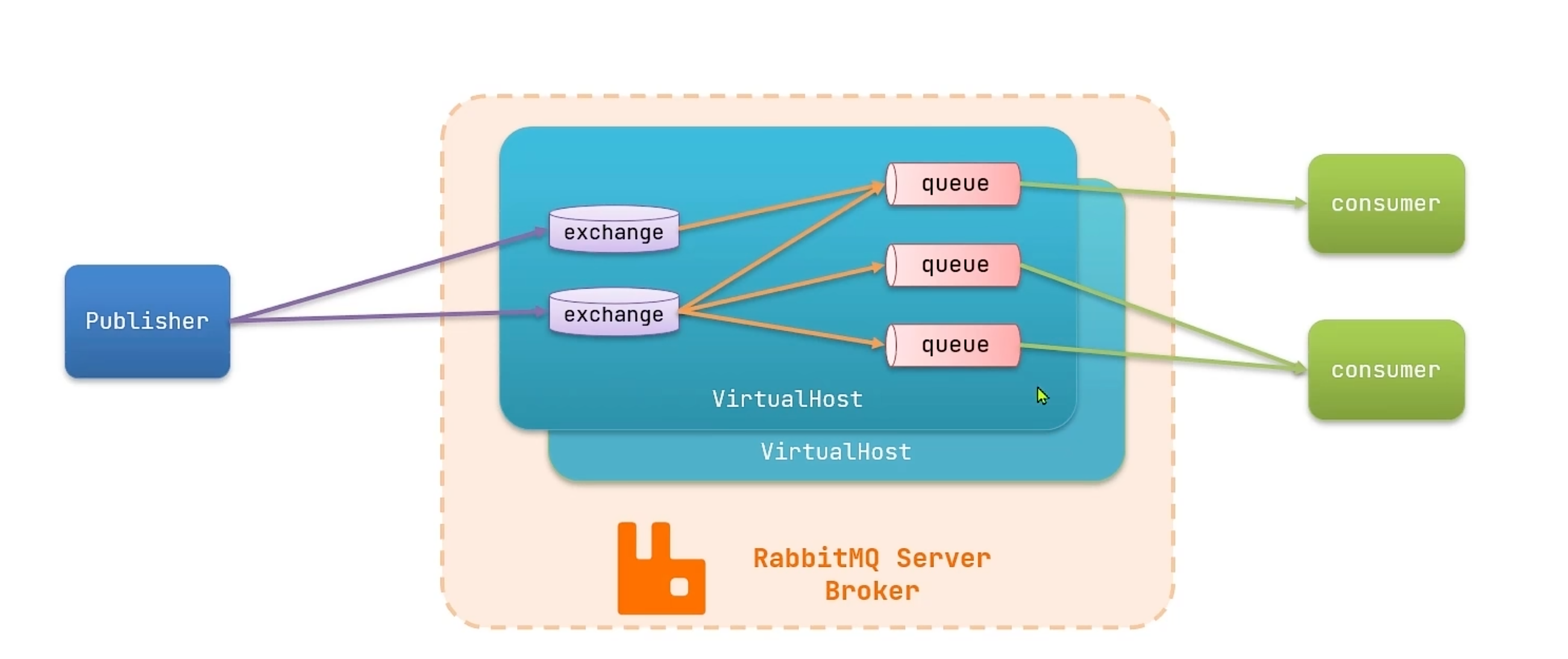
- Channel:操作MQ的工具
- exchange:路由消息到队列中
- Queue:缓存消息
- Virtual host:虚拟主机,是对queue、exchange等资源的逻辑分组
RabbitMQ实践
Java官方实现(BasicQueue Demo)
- 消费者和生产者都要连接MQ,并且创建好队列
- 消费者和生产者都要声明队列,防止消费到不存在的队列
1
2
3
4
5
6
7
8
9
10
11
12
13
14
15
16
17
18
19
20
21
22
23
24
25
26
27
28
29
30
31
32
33
34
35
36
37
38
|
ConnectionFactory factory = new ConnectionFactory();
factory.setHost("127.0.0.1");
factory.setPort(5672);
factory.setVirtualHost("/");
factory.setUsername("admin");
factory.setPassword("admin");
Connection connection = factory.newConnection();
Channel channel = connection.createChannel();
String queueName = "simple.queue";
channel.queueDeclare(queueName, false, false, false, null);
String message = "hello, rabbitmq!";
channel.basicPublish("", queueName, null, message.getBytes());
System.out.println("发送消息成功:【" + message + "】");
channel.close();
connection.close();
channel.basicConsume(queueName, true, new DefaultConsumer(channel){
@Override
public void handleDelivery(String consumerTag, Envelope envelope,
AMQP.BasicProperties properties, byte[] body) throws IOException {
String message = new String(body);
System.out.println("接收到消息:【" + message + "】");
}
});
System.out.println("等待接收消息。。。。");
|
SpringAMQP
- AMQP:Advanced Message Queuing Protocol,用于在应用程序之间传递业务消息的开发标准,与平台和语言无关
- Spring AMQP:基于AMQP协议定义的一套API规范,提供了模板来发送和接收消息
- spring-amqp:API抽象
- spring-rabbit:底层实现
- SpringAMQP官网
依赖和配置
1
2
3
4
5
|
<dependency>
<groupId>org.springframework.boot</groupId>
<artifactId>spring-boot-starter-amqp</artifactId>
</dependency>
|
1
2
3
4
5
6
7
| spring:
rabbitmq:
host: 127.0.0.1
port: 5672
virtual-host: /
username: admin
password: admin
|
简单代码(BasicQueue)
1
2
3
4
5
6
7
8
9
10
11
12
13
14
| @RunWith(SpringRunner.class)
@SpringBootTest
public class SpringAMQPTest {
@Autowired
private RabbitTemplate rabbitTemplate;
@Test
public void testSimpleQueue() {
String queueName = "simple.queue";
String message = "hello, spring amqp!";
rabbitTemplate.convertAndSend(queueName, message);
}
}
|
1
2
3
4
5
6
7
8
| @Component
public class SpringRabbitListener {
@RabbitListener(queues = "simple.queue")
public void listenSimpleQueue(String msg) {
System.out.println("消费者接收到simple.queue代码: 【" + msg + "】");
}
}
|
RabbitMQ消费模式
基本消息队列(BasicQueue)
一对一处理,阅后即焚。
- publisher:消息发布,将消息发送到队列queue
- queue:消息队列,负责接收并缓存消息
- consumer:订阅队列,处理队列中的消息

工作消息队列(WorkQueue)
一对多处理,多个消费者消费一个队列,消费不会重复,消费者是合作关系。
目的是为了提高吞吐。
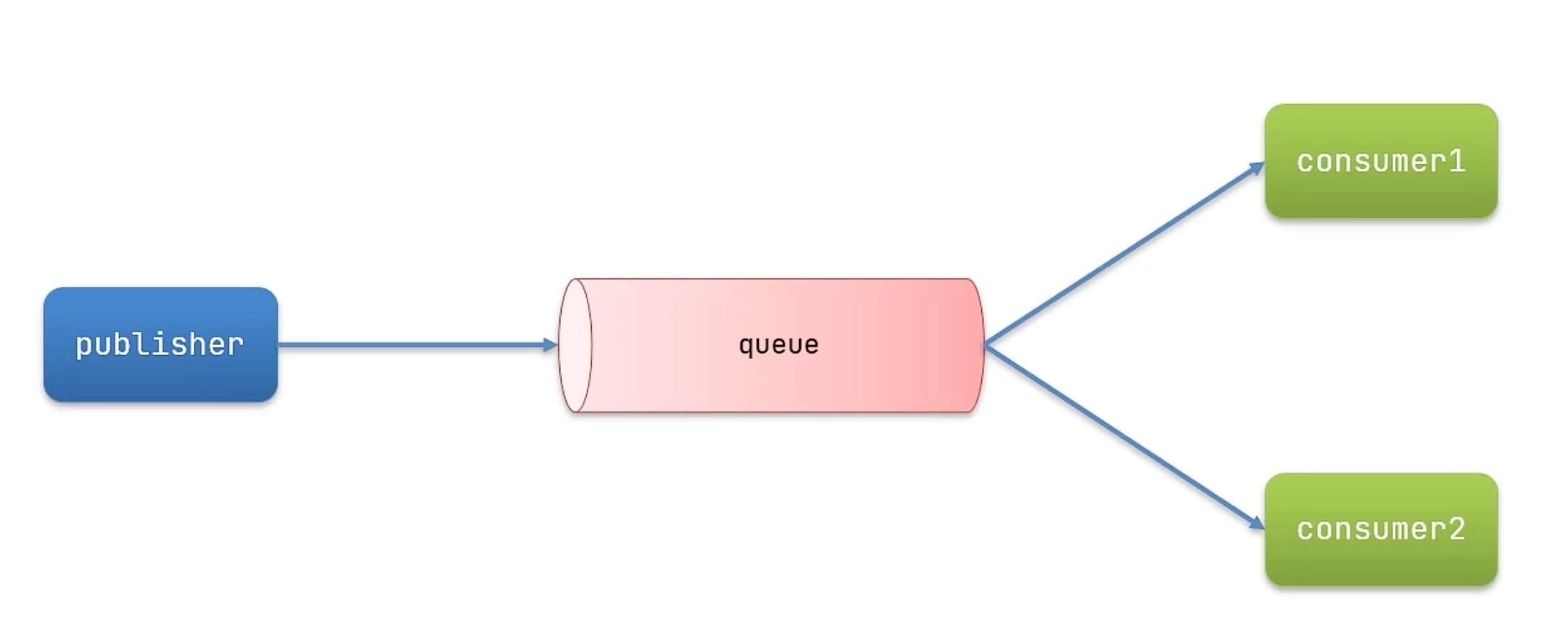
模拟实践
publisher每秒产生50条消息
consumer中定义两个监听者,监听这个队列
消费者1每秒处理50条,消费者2每秒消费5条
- 预期1秒消费完
1
2
3
4
5
6
7
8
9
| @Test
public void testWorkQueue() throws InterruptedException {
String queueName = "simple.queue";
String message = "hello, message__";
for (int i = 1; i <= 50; i++) {
rabbitTemplate.convertAndSend(queueName, message + i);
Thread.sleep(20);
}
}
|
1
2
3
4
5
6
7
8
9
10
11
| @RabbitListener(queues = "simple.queue")
public void listenWorkQueue1(String msg) throws InterruptedException {
System.out.println("消费者1接收到simple.queue代码: 【" + msg + "】" + LocalTime.now());
Thread.sleep(20);
}
@RabbitListener(queues = "simple.queue")
public void listenWorkQueue2(String msg) throws InterruptedException {
System.err.println("消费者2接收到simple.queue代码: 【" + msg + "】" + LocalTime.now());
Thread.sleep(200);
}
|
- 问题出现
- 消息预取:RabbitMQ会把消息先分配到了各个消费者,然后消费者慢慢消费
- 导致两个Consumer预取的消息一样多,但是Consumer2消费能力弱,导致了超时
- 问题解决:设置预取上限为1
1
| spring.rabbitmq.listener.simple.prefetch=1
|
发布订阅(Publish、Subscribe)
允许将一个消息发送给多个队列,实现方式时加入了exchange(交换机)。
exchange只负责转发,不负责存储
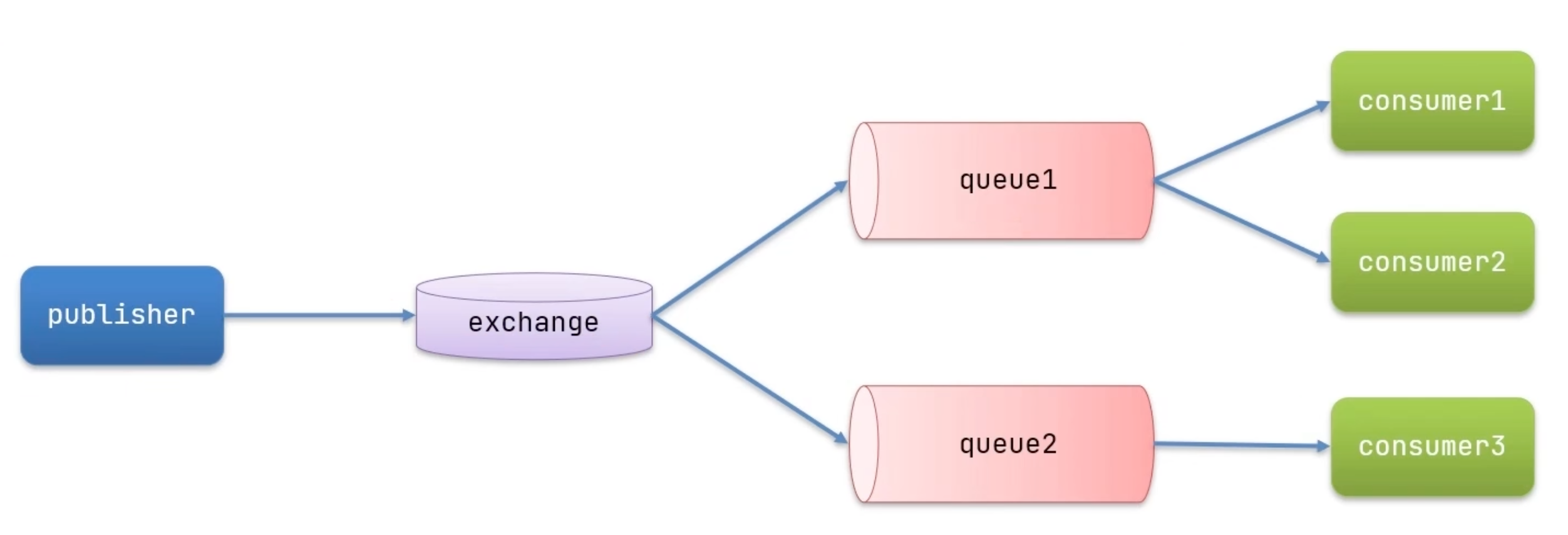
Fanout Exchange:广播
Fanout Exchange会将接收到的消息路由到每一个跟其绑定的queue
案例

1
2
3
4
5
6
| @Test
public void testSendFanoutQueue() throws InterruptedException {
String exchangeName = "itcast.fanout";
String message = "hello, fanoutMsg";
rabbitTemplate.convertAndSend(exchangeName, "", message);
}
|
1
2
3
4
5
6
7
8
9
10
11
12
13
14
15
16
17
18
19
20
21
22
23
24
25
26
27
28
29
30
31
32
33
34
35
36
37
38
39
|
@Configuration
public class FanoutConfig {
@Bean
public FanoutExchange fanoutExchange() {
return new FanoutExchange("itcast.fanout");
}
@Bean
public Queue fanoutQueue1() {
return new Queue("fanout.queue1");
}
@Bean
public Queue fanoutQueue2() {
return new Queue("fanout.queue2");
}
@Bean
public Binding bindingQueue1(Queue fanoutQueue1, FanoutExchange fanoutExchange) {
return BindingBuilder.bind(fanoutQueue1).to(fanoutExchange);
}
@Bean
public Binding bindingQueue2(Queue fanoutQueue2, FanoutExchange fanoutExchange) {
return BindingBuilder.bind(fanoutQueue2).to(fanoutExchange);
}
}
@RabbitListener(queues = "fanout.queue1")
public void listenFanoutQueue1(String msg) {
System.out.println("消费者1接收到fanout.queue1代码: 【" + msg + "】" + LocalTime.now());
}
@RabbitListener(queues = "fanout.queue2")
public void listenFanoutQueue2(String msg) {
System.err.println("消费者2接收到fanout.queue1代码: 【" + msg + "】" + LocalTime.now());
}
|
Direct Exchange:路由
会将接收到的消息,根据规则路由到指定的Queue,称为路由
- 每一个Queue都与Exchange设置一个或多个BindingKey
- 发布者发送消息时,指定消息的RoutingKey
- Exchange将消息路由到BindingKey与消息RoutingKey一致的队列

1
2
3
4
5
6
7
8
| @Test
public void testSendDirectQueue() {
String exchangeName = "memo.direct";
String message = "hello, yellow";
rabbitTemplate.convertAndSend(exchangeName, "yellow", message);
}
|
1
2
3
4
5
6
7
8
9
10
11
12
13
14
15
16
17
| @RabbitListener(bindings = @QueueBinding(
exchange = @Exchange(value = "memo.direct"),
value = @Queue("direct.queue1"),
key = {"red", "blue"}
))
public void listenDirectQueue1(String msg) {
System.out.println("消费者1接收到direct.queue1消息: 【" + msg + "】" + LocalTime.now());
}
@RabbitListener(bindings = @QueueBinding(
exchange = @Exchange(value = "memo.direct"),
value = @Queue("direct.queue2"),
key = {"red", "yellow"}
))
public void listenDirectQueue2(String msg) {
System.err.println("消费者2接收到direct.queue2消息: 【" + msg + "】" + LocalTime.now());
}
|
- @RabbitListener
- @Queue
- @Exchange(value=””, type=””)
- key={“”,””}
Topic Exchange:主题
TopicExchange与DirectExchange类似,区别在于routingKey必须是多个单词的列表,并且以.分割
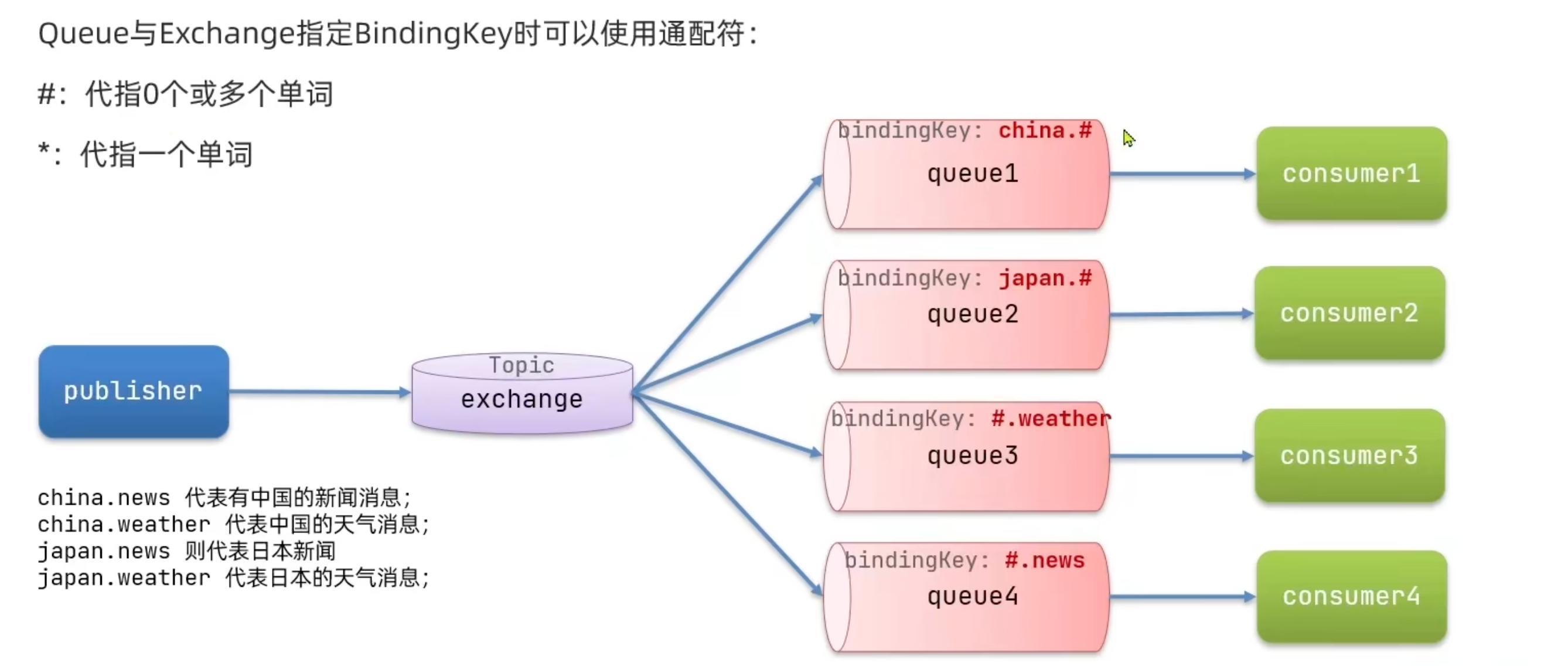
1
2
3
4
5
6
7
8
| @Test
public void testSendTopicQueue() {
String exchangeName = "memo.topic";
String message = "hello, US weather";
rabbitTemplate.convertAndSend(exchangeName, "us.weather", message);
}
|
1
2
3
4
5
6
7
8
9
10
11
12
13
14
15
16
17
| @RabbitListener(bindings = @QueueBinding(
exchange = @Exchange(value = "memo.topic", type = ExchangeTypes.TOPIC),
value = @Queue("topic.queue1"),
key = "#.weather"
))
public void listenTopicQueue1(String msg) {
System.err.println("topic.queue1消息: 【" + msg + "】" + LocalTime.now());
}
@RabbitListener(bindings = @QueueBinding(
exchange = @Exchange(value = "memo.topic", type = ExchangeTypes.TOPIC),
value = @Queue("topic.queue2"),
key = "china.#"
))
public void listenTopicQueue2(String msg) {
System.err.println("topic.queue2消息: 【" + msg + "】" + LocalTime.now());
}
|
SpringAMQP消息转换器
在SpringAMQP的发送方法中,接受消息的类型是Object,SpringAMQP帮我们序列化成字节后发送。
- 默认序列化方式:
`java-serialized-object
Spring的对消息对象的处理是由org.springframework.amqp.support.converter.MessageConverter来处理的,默认的方式是基于JDK的ObjectOutputStream完成的序列化。
- 可以定义一个MessageConverter类型的Bean就可以替换
JSON方式序列化
1
2
3
4
5
| <dependency>
<groupId>com.fasterxml.jackson.dataformat</groupId>
<artifactId>jackson-dataformat-xml</artifactId>
<version>2.9.10</version>
</dependency>
|
1
2
3
4
| @Bean
public MessageConverter messageConverter() {
return new Jackson2JsonMessageConverter();
}
|
- 接收:和发送的配置一样,然后用Map或者Object等接收就行









